The Fed held rates steady, while the ECB cut rates to 2.75% and signaled further easing.
Trump reaffirmed 25% tariffs on Mexico and Canada, with a 10% tariff on China still under review. Gold surged past $2,800, while silver hit a six-week high. The yen gained as the BOJ hinted at more rate hikes, and the dollar strengthened on economic resilience and tariff fears. Investors now await key US PCE inflation data and upcoming central bank decisions.
| Time | Cur. | Event | Forecast | Previous |
| 10:00 | EUR | Eurozone CPI (Jan) | 2.4% | 2.4% |
| 14:45 | USD | S&P Global Manufacturing PMI (Jan) | 50.1 | 49.4 |
| 15:00 | USD | ISM Manufacturing PMI (Jan) | 49.3 | 49.2 |
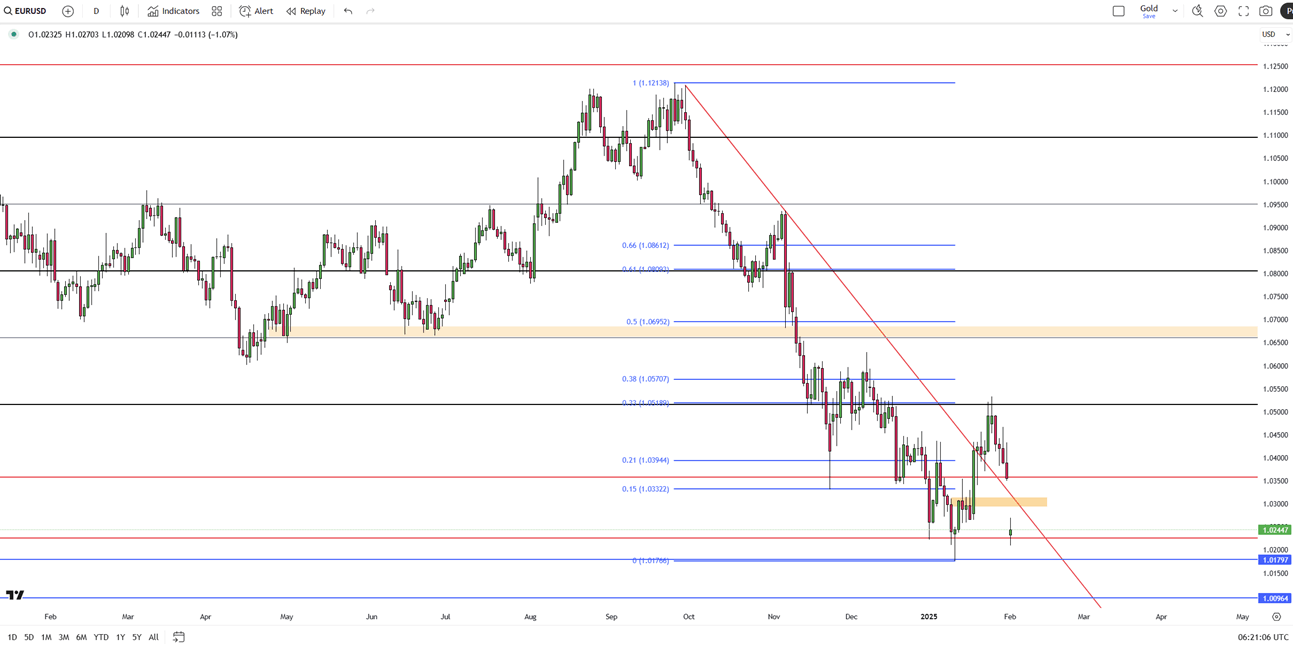
The euro dropped to $1.02, marking its lowest level in three weeks, as the U.S. dollar strengthened following President Donald Trump's decision to implement tariffs of 25% on Canadian and Mexican imports and 10% on Chinese goods starting Tuesday. Trump has also warned of potential tariffs on the European Union, prompting the region to vow a strong response. These factors added to the pressure on the euro, which was already weakened by the European Central Bank's dovish stance.
Last week, the ECB cut interest rates by 25 basis points as expected and signaled the possibility of further reductions later this year. Currently, market traders are factoring in the likelihood of three additional ECB rate cuts by the end of 2025.
From a technical perspective, the first resistance level is at 1.0300, with further resistance levels at 1.0350 and 1.0450 if the price breaks above. On the downside, the initial support is at 1.0220, followed by additional support levels at 1.0180 and 1.0120.
| R1: 1.0300 | S1: 1.0220 |
| R2: 1.0350 | S2: 1.0180 |
| R3: 1.0450 | S3: 1.0120 |
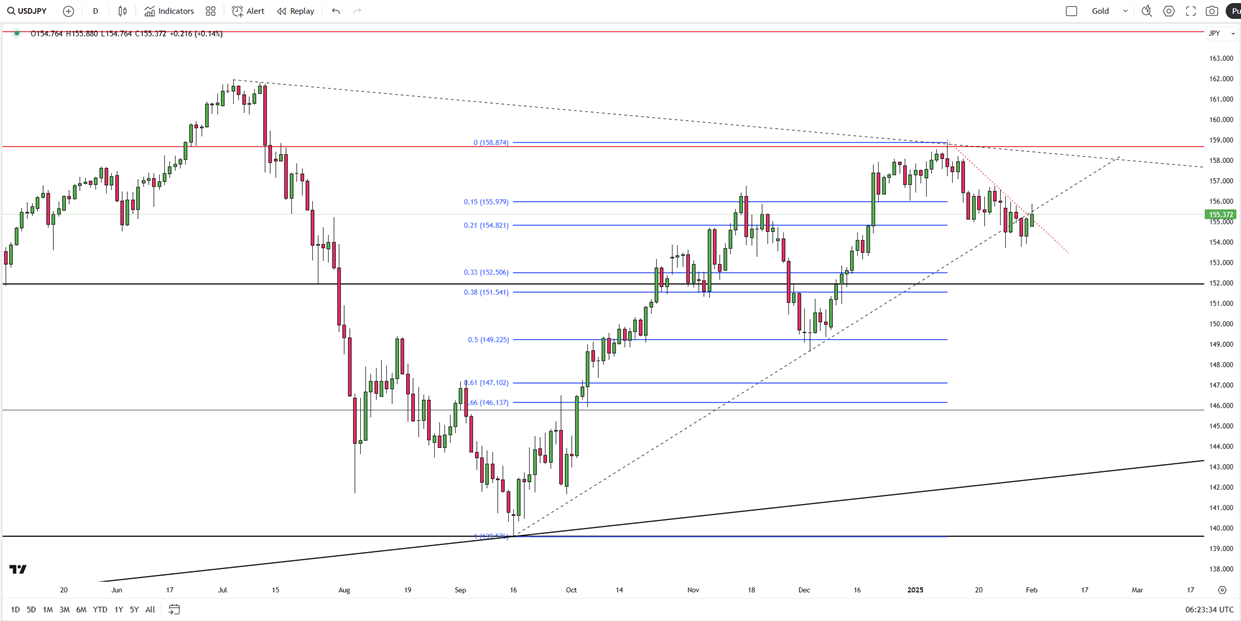
The Japanese yen weakened beyond 155.5 per dollar, marking its second straight decline as the dollar strengthened. The US imposed a 25% tariff on imports from Mexico and Canada, along with a 10% tariff on Chinese goods, triggering retaliatory actions from the affected nations. Although Japan was not directly targeted, its export-driven economy remains exposed to global trade disruptions.
A summary of discussions from the Bank of Japan’s January meeting indicated that policymakers considered the possibility of further interest rate hikes to counter inflationary pressures and a weakening yen. In January, the BOJ raised its policy rate and signaled its willingness to increase rates again if economic conditions and inflation trends warrant further action.
The key resistance level appears to be 155.90, with a break above it potentially targeting 158.70 and 160.00. On the downside, 153.80 is the first major support, followed by 151.90 and 149.20 if the price moves lower.
| R1: 155.90 | S1: 153.80 |
| R2: 158.70 | S2: 151.90 |
| R3: 160.00 | S3: 149.20 |
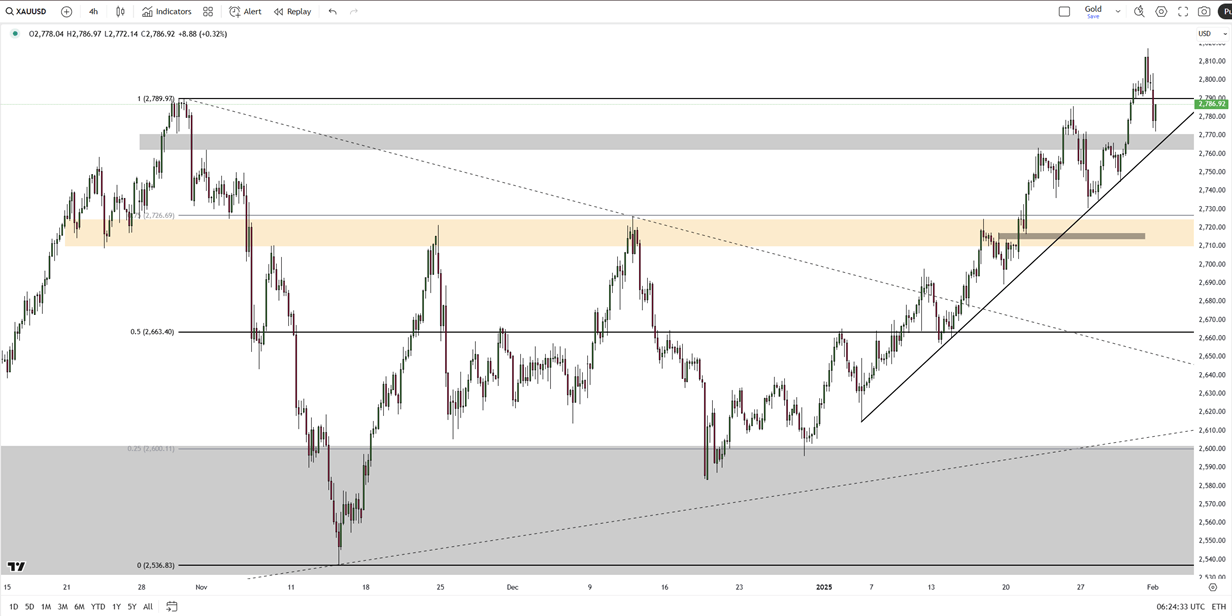
Gold fell below $2,780 per ounce as the strengthening U.S. dollar outweighed safe-haven demand following the U.S. decision to impose tariffs on imports from Canada, Mexico, and China. Trump announced a 25% tariff on Canadian and Mexican goods and a 10% levy on Chinese imports, set to take effect on Tuesday. Although such developments typically stimulate demand for gold, the appreciating dollar and interest rate outlook are limiting upward pressure. A stronger dollar makes gold more expensive for international buyers while the inflationary effects of tariffs could keep borrowing costs high, weighing on the appeal of non-yielding assets like bullion. Some investors also engaged in profit-taking after gold recently hit a record high, further contributing to its decline.
Technically, the first resistance level will be 2817 level. In case of this level’s breach, the next levels to watch would be 2858 and 2900. On the downside, 2760 will be the first support level. 2727 and 2710 are the next levels to monitor if the first support level is breached.
| R1: 2817 | S1: 2760 |
| R2: 2858 | S2: 2727 |
| R3: 2900 | S3: 2710 |
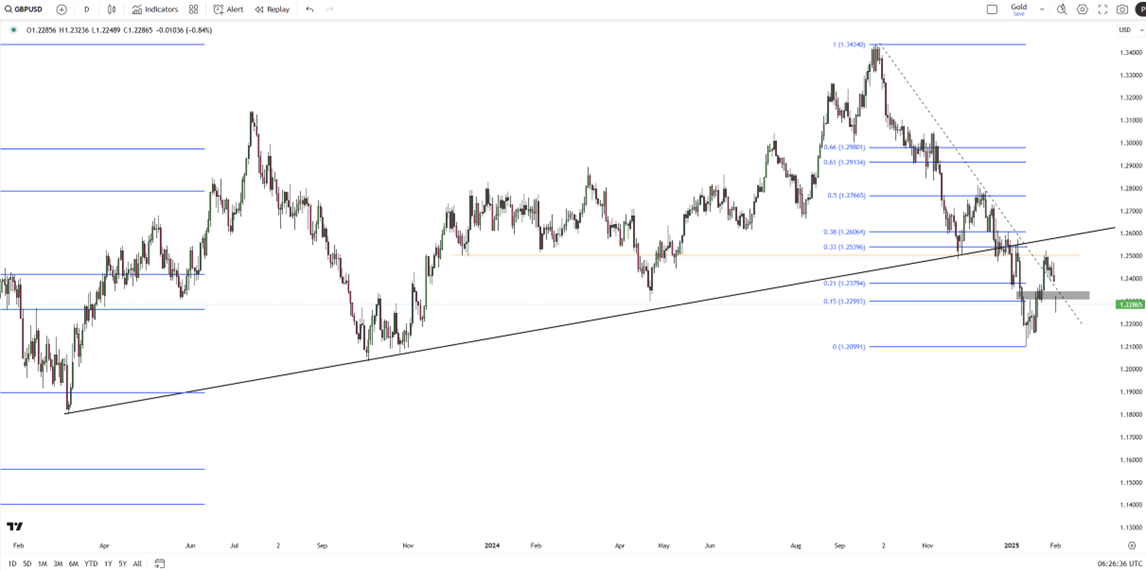
The British Pound dropped to approximately $1.22, reaching its lowest level in nearly two weeks as Trump's tariffs sent a shock wave through major currencies. The Bank of England is still expected to cut interest rates by 25 basis points at its February 2025 meeting, though outperforming economic data suggests that additional rate cuts may be delayed.
British Finance Minister Rachel Reeves outlined government initiatives aimed at boosting economic growth, including plans for a third runway at Heathrow Airport. However, investors remain focused on concerns about the sustainability of Britain’s debt levels.
The first resistance level for the pair will be 1.2385. In the event of this level's breach, the next levels to watch would be 1.2500 and 1.2600. On the downside 1.2265 will be the first support level. 1.2100 and 1.1900 are the next levels to monitor if the first support level is breached.
| R1: 1.2385 | S1: 1.2265 |
| R2: 1.2500 | S2: 1.2100 |
| R3: 1.2600 | S3: 1.1900 |
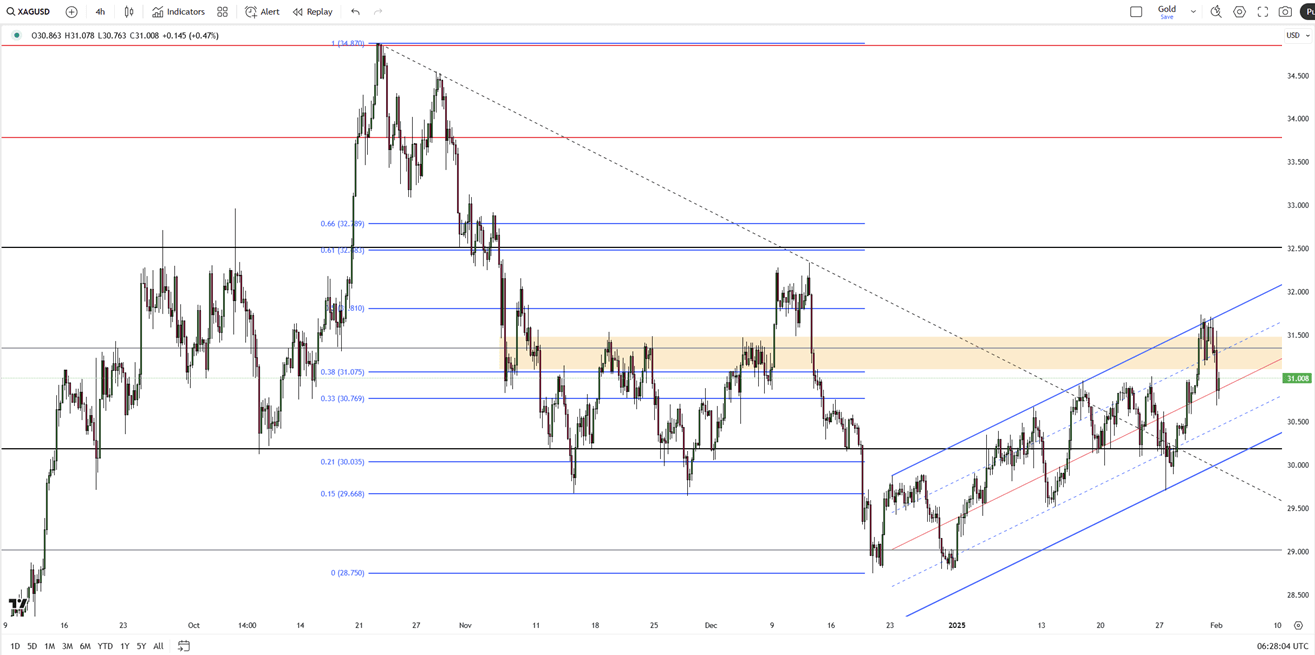
Silver remained above $31.40 per ounce on Friday, staying close to a seven-week high as the Silver Institute forecasted a significant market deficit for the metal in 2025 for the fifth year. This shortfall is primarily driven by strong industrial demand and retail investment, which are expected to outweigh declining consumption in jewelry and silverware. Silver contributes to industries such as solar panels, electric vehicles, and consumer electronics. Although global silver production is set to rise this year with higher output from China, Canada, and Chile, the ongoing supply deficit is expected to persist.
Technically, the first resistance level will be 31.80 level. In case of this level’s breach, the next levels to watch would be 32.50 and 32.90. On the downside, 30.85 will be the first support level. 30.20 and 29.30 are the next levels to observe if the first support level is breached.
| R1: 31.80 | S1: 30.85 |
| R2: 32.50 | S2: 30.20 |
| R3: 32.90 | S3: 29.30 |
 Bond Market Pushback Takes Center Stage
Bond Market Pushback Takes Center StageMarkets are almost fully pricing in another Federal Reserve rate cut this week, yet the US bond market continues to move in the opposite direction.
Detail Central Bank Expectations Reset the Tone (8-12 December)
Central Bank Expectations Reset the Tone (8-12 December)Traders adjusted positioning before the Federal Reserve’s December decision and evaluated fresh signals from the ECB, BoE and BOJ.
Detail Futures Stall, 10-Year Yield Pushes Above 4.1% (12.08.2025)US stock futures were flat on Monday ahead of the Fed’s meeting, with markets pricing an 88% chance of a 25 bp cut on Wednesday.
DetailThen Join Our Telegram Channel and Subscribe Our Trading Signals Newsletter for Free!
Join Us On Telegram!